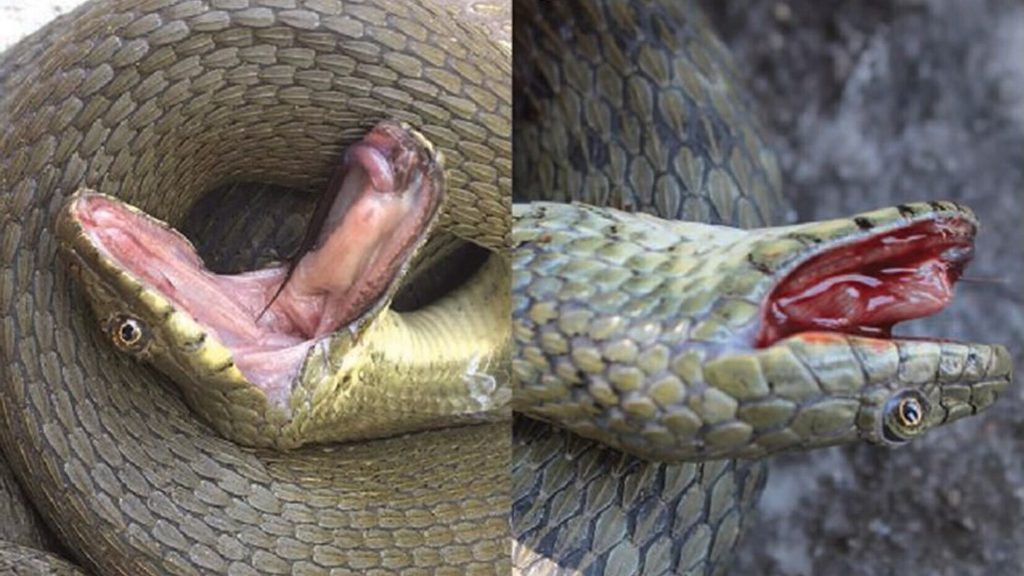When Dice snakes encounter a predator, some dramatic members of the fish-eating species go to great lengths to avoid becoming prey.
On Golem Grad, a lake island in North Macedonia, Dice snakes under threat from birds play dead by going rigid or lax, smearing poop and musk on themselves, and even bleeding from their mouths. Death causes muscle relaxation and can lead animals to defecate or urinate post mortem. defecate or urinate post mortem.
Researchers at the University of Belgrade in Serbia simulated predation by lunging at and grabbing the snakes and pinching them around their midsection. The researchers tested 263 snakes in the field and observed that 10.6 percent of them released “small pools” or even “dripping mouthfuls” of blood from their mouths. The study notes that heightened stress hormone levels may trigger the phenomenon by increasing the snakes’ blood pressure.
The snakes that pretended to be dead did so “for a shorter amount of time than those who did not,” research associates at the Belgrade Institute of Zoology, Vukašin Bjelica and Ana Golubović, wrote in their findings on Wednesday. Published in the journal Biology Letters, the study found that snakes which smeared before bleeding spent about two seconds less playing dead. new study The study notes that other factors, such as the snakes’ sex, size, and prior experience with predators, may have influenced how long they played dead.
The study notes that other factors, such as the snakes’ sex, size, and prior experience with predators, may have influenced how long they played dead.
“Two seconds might not be much when you’re reading the paper, but it could be enough for a snake to make a successful escape,” Bjelica told the New York Times. New York Times. “They really commit to the role, depending on the individual,” Bjelica added.
The researchers said they saw adult Dice snakes feign death more often than juveniles (35.3% versus 31.9%, respectively); the hatchling snakes they studied, however, never played dead. The authors wrote in the study that young snakes “are at greater risk of predation and, in turn, should avoid risky antipredator displays.”
Plenty of species defend themselves by thanatosis, or playing dead. Other examples of death feigning critters include hognose snakes, the Virginia opossums, and brown widow spiders. Humans sometimes employ such tactics; the U.S. National Park Service recommends that people first try playing dead when they’re attacked by a brown bear. National Park Service recommends that people first try playing dead when they’re attacked by a brown bear.
“The origin and evolution of [feigning death] is rather enigmatic when you think about it,” Bjelica said in an email to . “If you’re being attacked by a predator it’s kind of counterintuitive to make the predator’s job easier by playing dead,” he added. But when it works, acting dead may turn predators’ attention to other prey. PopSci. An offensive smell or taste may also motivate predators to go elsewhere. According to Bjelica, playing dead “requires quite a specific set of circumstances to be effective.” turn predators’ attention to other prey. An offensive smell or taste may also motivate predators to go elsewhere. According to Bjelica, playing dead “requires quite a specific set of circumstances to be effective.”
The researcher said he has studied the Golem Grad snake population since 2018. While no mammals call the island home, snakes there face “intense avian predation,” said Bjelica, from birds such as herons, gulls, corvids and some raptor birds.
Regarding the simulated hunting that enabled the research, none of the examined snakes were harmed while being handled, and none of them seemed upset when they were let go, the researchers stated at the end of the study.









